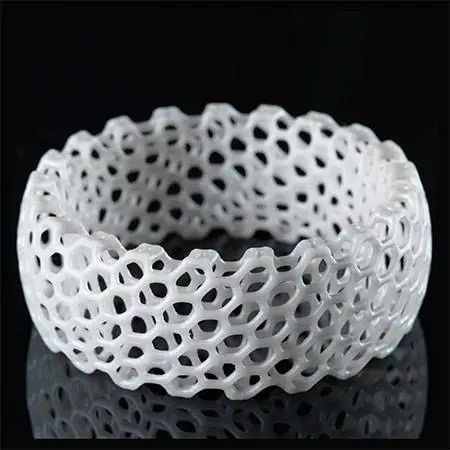If you are a 3D printing enthusiast, you know how important it is to maintain a consistent temperature for your prints. Temperature affects the quality, strength, and appearance of your 3D printed objects. Too hot or too cold, and you may end up with warping, cracking, stringing, or other defects.
So how can you control the temperature of your 3D printer? Here are some tips and tricks to help you achieve the best results.
- Use a heated bed. A heated bed is a platform that heats up the first layer of your print, preventing it from cooling down too quickly and warping. Most 3D printers have a heated bed option, and you can adjust the temperature according to the material you are using. For example, PLA usually works well with a heated bed temperature of around 60°C, while ABS requires a higher temperature of around 100°C.
- Enclose your printer. Another way to keep your prints warm and stable is to enclose your printer with a cover or a box. This creates an insulated environment that prevents drafts and temperature fluctuations from affecting your prints. You can buy a ready-made enclosure for your printer model, or make one yourself with some cardboard, wood, or acrylic.
- Use a cooling fan. While keeping your prints warm is important, you also need to cool them down gradually and evenly to avoid cracking and shrinking. A cooling fan is a device that blows air over your prints as they are being printed, helping them solidify and retain their shape. Most 3D printers have a built-in cooling fan, but you can also add an external one for better airflow and control.
- Choose the right material. Different materials have different thermal properties and require different temperatures to print well. For example, PLA is a low-temperature material that melts at around 190°C and cools down quickly, while ABS is a high-temperature material that melts at around 230°C and cools down slowly. You should choose the material that suits your printer's capabilities and your desired print quality.
- Calibrate your printer. Finally, you should always make sure that your printer is calibrated and tuned properly before starting a print. This means checking the nozzle temperature, the bed temperature, the extrusion rate, the print speed, and other settings that affect the temperature of your prints. You can use a thermometer or an infrared sensor to measure the actual temperature of your nozzle and bed, and adjust them accordingly.
By following these steps, you can control the temperature of your 3D printer and improve your print quality and reliability. Happy printing!
1. Heat transfer
The print head of a 3D printer has two types of heat transfer: heat conduction and heat convection. During the printing process, the solid print material is heated into a liquid by the heating cavity to maintain a molten state with good adhesion mobility, proper filament width and good adhesion properties to ensure the quality of the specimen, i.e. the heat transfer process.
In order for the printing process to be completed smoothly and the specimen to meet standards, the heating chamber temperature needs to be kept at a constant temperature in order to avoid being too low or too high, and when the temperature is too high, the air conditioning needs to be turned on to reduce the temperature, i.e. the thermal convection process.
2. Temperature sensor
The temperature sensor is a device that converts the temperature signal perceived by the outside world into a useful electrical signal in the circuit. Temperature sensors include metal RTDs, thermocouples, new integrated temperature sensors and so on. Metal RTDs or thermocouples are commonly used in industrial temperature control systems, while new integrated temperature sensors are mostly used in small temperature measurement circuits.
The temperature sensor chosen for 3D printers is related to the material used for printing. Currently, the materials commonly used in 3D printing are PVC, PBS, ABS, etc. These polymer materials have a temperature range of 100 to 280 degrees Celsius.

In terms of temperature measurement range, copper resistors are unsatisfactory and thermocouples have a large temperature measurement range, but their measurement accuracy is not sufficient considering the low temperature measurement. Therefore, platinum resistance was used as a temperature control sensor for the print head of the 3D printer.
3. Closed-loop temperature control system
The temperature control system in a 3D printer is essential, not only to monitor the proper functioning of the printer, but also directly related to the print results and quality. The print material is heated to a molten state in the heating chamber and extruded from the print head at the start of printing. As different materials have different melting points, different temperatures have to be set.
In addition, the print material should always be melted during the printing process, otherwise the print result will be affected. If the temperature is too high, the nozzle outlet will become sticky and affect the result of the specimen, even leading to deformation of the specimen; if the temperature is too low, it will accelerate the solidification of the material and will not be able to bond completely with other materials, even leading to the material not being ejected and the print not being completed successfully.



